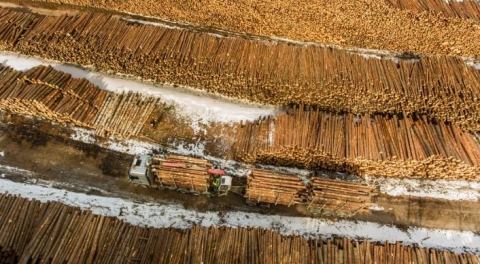Joint wood terminals
One of the challenges in wood mobilization is small-scale wood units within long distances from the nearest roads. These units are not profitable for harvesting, since forest and long-distance transportation are of high costs. The answer to the challenge might lie in bigger wood terminals where wood from multiple small-scale units would be gathered from the same area for intermediate storage. In general, storing the wood is sensible at a distance of about 100 to 150 km from the site of use. The best location for intermediate storage is at the beginning of forest roads.
In Lapland, for instance, a few big terminals have been built close to the railway to advance the efficiency of wood transportation by train. In the provinces, larger terminals are usually located mainly according to the needs of industry and large forestry companies. Benefits of common terminals occur especially in wintertime, when maintenance of storage area could be done commonly or by the certain terminal operator. The joint terminals are well suited for energy wood and wood for which the need for storage is at a different time. This allows continuous use of area.
Operating culture, various practices, and lack of cooperation of the actors are experienced to restrict the wider deployment of common terminals. However, an increase in wood flows will require building more terminals. There is a need for more joint terminals, but it requires cooperation between forest service providers. It would be highly useful to gather the intermediate storage places in one map-based spatial database, which would be open-accessed for all the service providers. This would advance bringing together different actors in the wood procurement chain. In summary, the main benefits comprise:
- Joint wood terminals of forest companies for short-term storage of wood
- Profitable harvesting from the small-scale unit
- Efficiency in wood transportation by train
- Less environmental effects because of centralized terminals
Environmental effects burdening only big terminals instead of several small terminals.
Involve all relevant stakeholders in the development.

